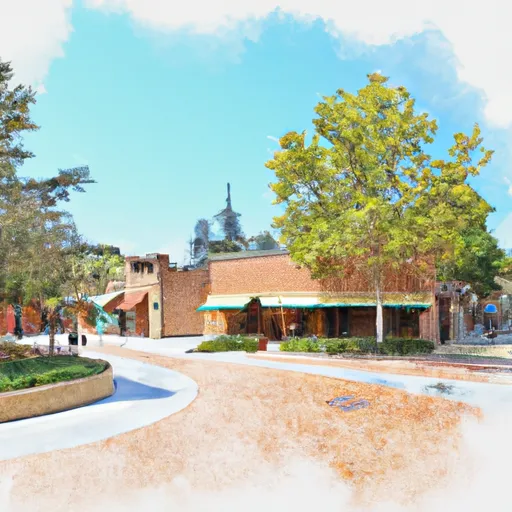-
 Snoflo Premium
Snoflo Premium
Get unlimited access to all our content
With no Ad interruptions! - Start Your Free Trial Login with existing account
Claremont
Eden Index
Climate
9.4
•
Recreation
6.8
•
Community
2.8
•
Safeguard
6.8/10

Claremont, California is a small city located in Los Angeles County. The climate in Claremont is characterized by warm and dry summers, and mild winters with occasional rainfall. The hydrology constituents in Claremont consist of the San Gabriel Mountains, which provide the city with a reliable source of water. Outdoor recreation opportunities in Claremont include hiking, biking, and exploring the many trails in the area, including the popular Claremont Hills Wilderness Trail. The city is also home to several parks, including the beautiful Rancho Santa Ana Botanic Garden, which hosts a variety of events and activities throughout the year. Overall, Claremont offers visitors and residents a great combination of outdoor recreation and natural beauty.
What is the Eden Index?
The Snoflo Eden Index serves as a comprehensive rating system for regions, evaluating their desirability through a holistic assessment of climate health, outdoor recreation opportunities, and natural disaster risk, acknowledging the profound impact of these factors on livability and well-being.
Climate Health Indicator (CHI): 9.4
Claremont receives approximately
492mm of rain per year,
with humidity levels near 72%
and air temperatures averaging around
18°C.
Claremont has a plant hardyness factor of
9, meaning
plants and agriculture in this region tend to thrive here all year round.
By considering the ideal temperature range, reliable water supplies, clean air, and stable seasonal rain or snowpacks, the Climate Health Indicator (CHI) underscores the significance of a healthy climate as the foundation for quality living.
A healthy climate is paramount for ensuring a high quality of life and livability in a region, fostering both physical well-being and environmental harmony. This can be characterized by ideal temperatures, reliable access to water supplies, clean air, and consistent seasonal rain or snowpacks.
Weather Forecast
Streamflow Conditions
Santa Ana
Area Rivers
Santa Ana
Snowpack Depths
Santa Ana
Reservoir Storage Capacity
Santa Ana
Groundwater Levels
Recreational Opportunity Index (ROI): 6.8
The Recreational Opportunity Index (ROI) recognizes the value of outdoor recreational options, such as parks, hiking trails, camping sites, and fishing spots, while acknowledging that climate plays a pivotal role in ensuring the comfort and consistency of these experiences.
Access to outdoor recreational opportunities, encompassing activities such as parks, hiking, camping, and fishing, is crucial for overall well-being, and the climate plays a pivotal role in enabling and enhancing these experiences, ensuring that individuals can engage in nature-based activities comfortably and consistently.
Camping Areas
| Campground | Campsites | Reservations | Toilets | Showers | Elevation |
|---|---|---|---|---|---|
| Lupine | 11 | 6,551 ft | |||
| Guffy | 6 | 8,219 ft | |||
| Prado Regional Park | 75 | 553 ft | |||
| Crystal Lake Rec Area | 191 | 5,689 ft | |||
| Bohelli Regional Park | None | 1,107 ft | |||
| ONeill Regional Park | 85 | 1,110 ft | |||
| Coldbrook | 20 | 3,285 ft | |||
| Chino Hills - State Park | 20 | 480 ft | |||
| Manker | 21 | 6,015 ft | |||
| Cabin Flat | 11 | 6,690 ft |
Catastrophe Safeguard Index (CSI):
The Catastrophe Safeguard Index (CSI) recognizes that natural disaster risk, encompassing floods, fires, hurricanes, and tornadoes, can drastically affect safety and the overall appeal of an area.
The level of natural disaster risk in a region significantly affects safety and the overall livability, with climate change amplifying these risks by potentially increasing the frequency and intensity of events like floods, fires, hurricanes, and tornadoes, thereby posing substantial challenges to community resilience and well-being.
Community Resilience Indicator (CRI): 2.8
The Community Resilience Indicator (CRI) recognizes that education, healthcare, and socioeconomics are crucial to the well-being of a region. The CRI acknowledges the profound impact of these elements on residents' overall quality of life. By evaluating educational resources, healthcare accessibility, and economic inclusivity, the index captures the essential aspects that contribute to a thriving community, fostering resident satisfaction, equity, and social cohesion.

